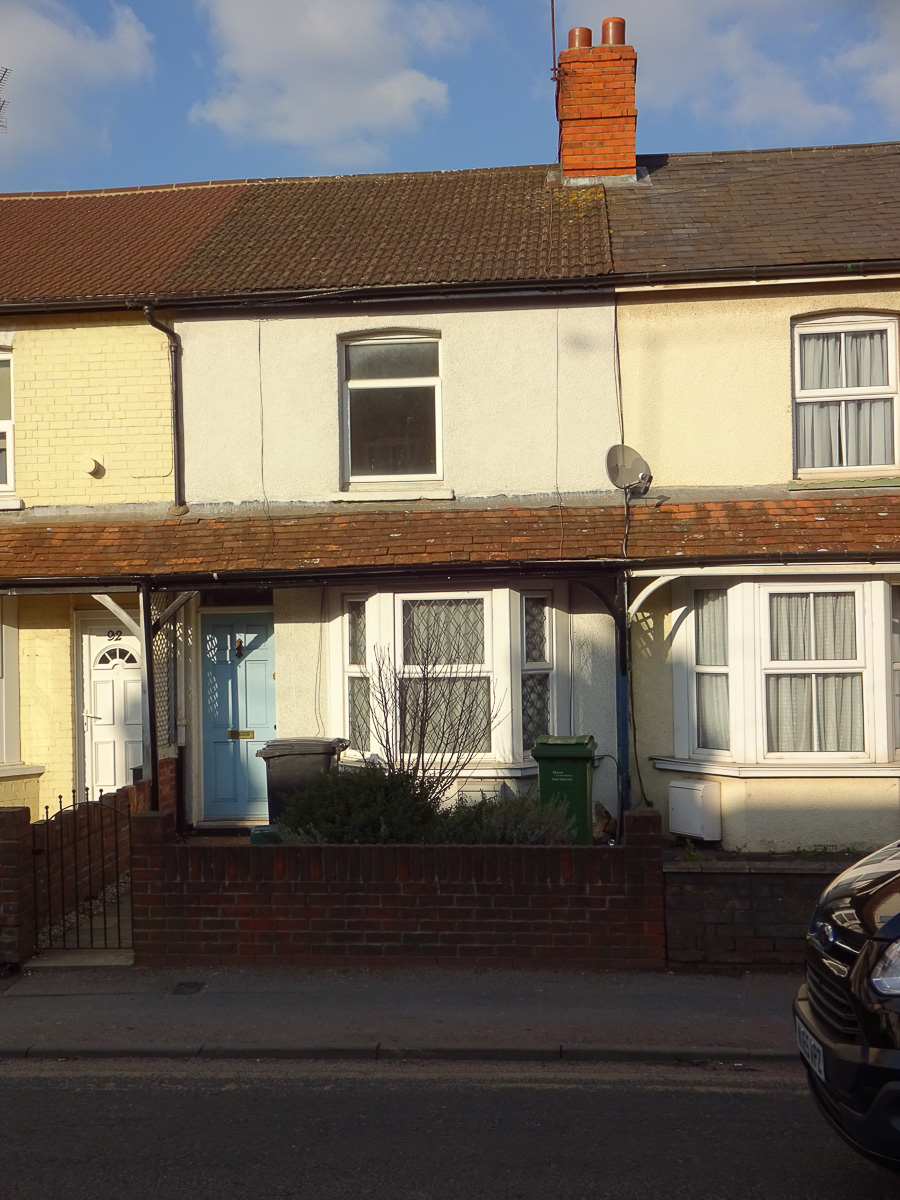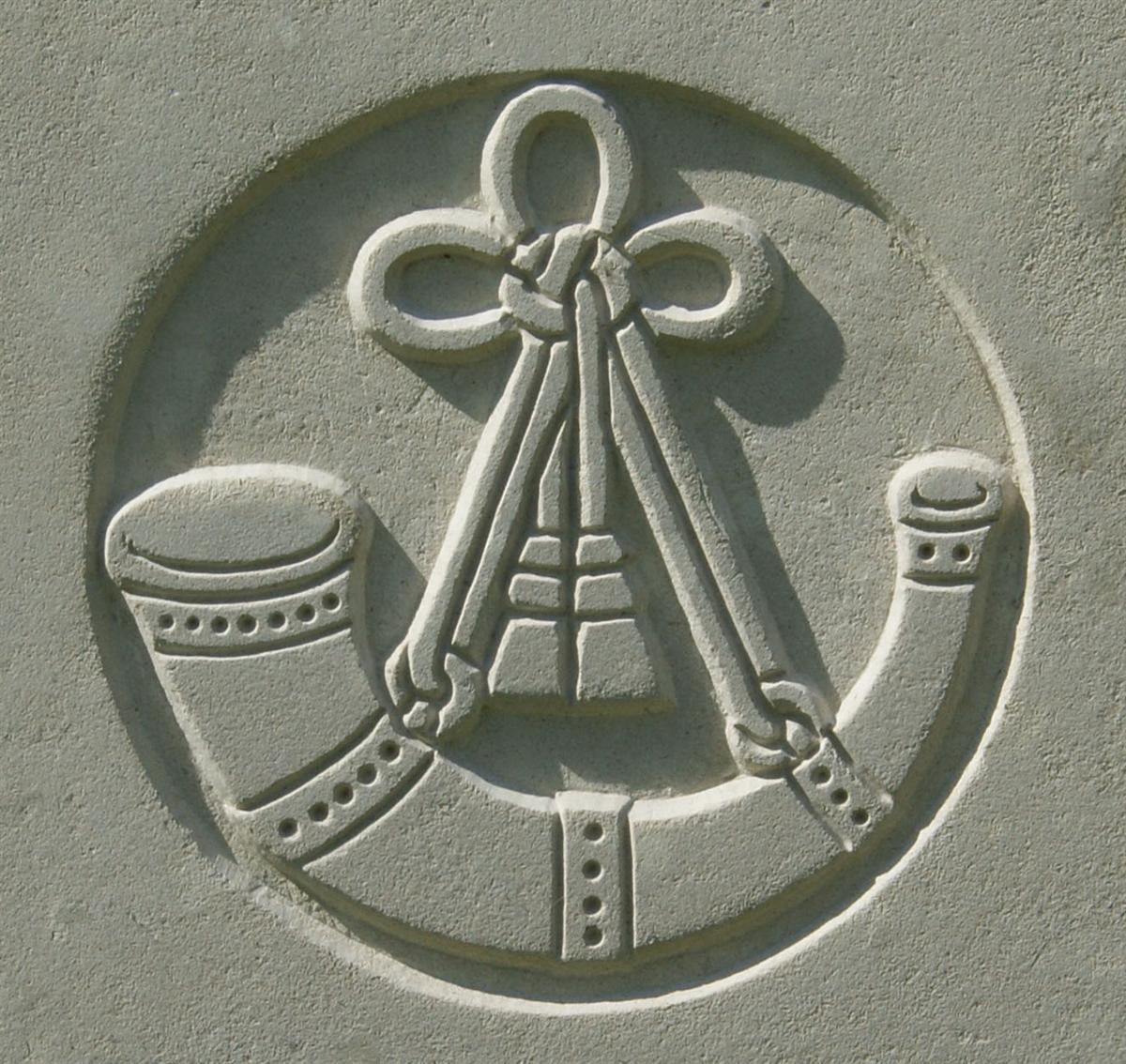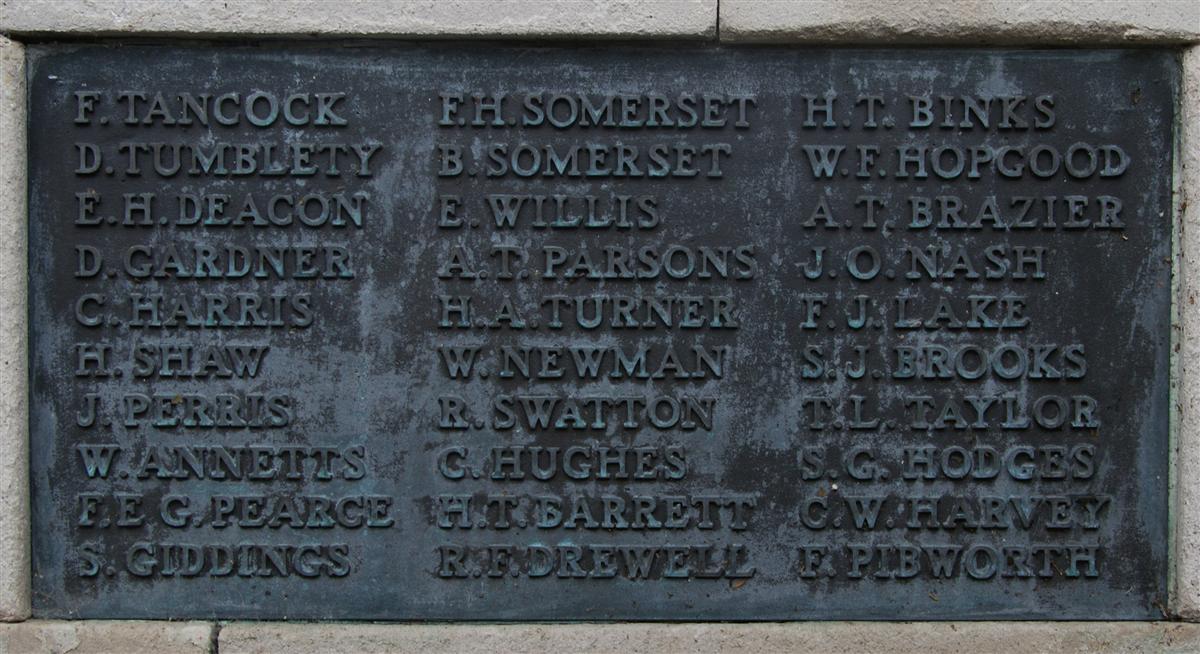William Frederick Hopkins
Private 34781 William Frederick Hopkins, 2nd Battalion, Oxfordshire and Buckinghamshire Light Infantry
William was born in 1899 in the parish of St Saviour, Paddington and was baptised at the parish church on 22 June. His father, William George Hopkins was a saddler and harness maker by trade, his mother was Caroline Rosetta née Williams.

94 King's Road - 11 South View when William was living there with his parents. |
With older men it is often possible to gather some information on their life before the Army, but William was only eighteen when he was conscripted in 1917 – too young to have made much of an impact in the world. Even his schooling remains a mystery as he did not attend any of the Newbury schools whose records have survived. It is probable that he went to St John’s School as not only was his home in the parish, but he also appears on the parish memorial board for the fallen members of the church (such boards would often include former pupils of the church school).
In early 1917 he turned 18, which would soon have resulted in a call-up for a medical to determine his fitness to serve. His war gratuity (a sum paid to the next of kin of all fallen British soldiers) was five pounds – indicative of under a year of service. This means that he did not join the army immediately after his birthday, but in late 1917, perhaps even early 1918.
After training in the UK with a training battalion he was posted to the front to serve in the 4th Battalion, Hampshire Regiment (service number 43362). This may mean that he served in the line with the 2nd/4th Battalion (the only of the regiment’s three ‘4th’ battalions to serve on the Western Front). However, it is possible that his service with the Hampshire Regiment was limited to a few days at an Infantry Base Depot, or that he trained with the 3rd/4th in the UK and was deemed to remain a member as he went to France. Infantry troops being sent to France would go first to one of these depots from whence they would be allocated to the next unit in need. In the chaos of March/April 1918 when units were being smashed apart by the German spring offensive it is very possible that a draft of men would be diverted from one unit to another in more desperate need.

The regimental badge of the Ox & Bucks Light Infantry, as used on CWGC headstones. |
He probably went to France in April/May 1918 when the German onslaught created a manpower crisis at the Front and the Government released a large number of men which had been held back in the UK by Lloyd George in a deliberate attempt to prevent Haig instigating another offensive. So desperate was the situation that the age limit for the Front was lowered from 19 to 18½.
William was with his battalion for a few months as the nature of the war changed radically following the Battle of Amiens; the old lines were broken; the fighting took place in relatively open countryside and scattered villages. The Germans were fighting from rapidly improvised defences, falling back steadily towards the German border.
On 23 October 1918 William’s battalion was tasked with undertaking the second phase of an assault from the village of Vertain towards Escarmain, which they were to capture. Apart from a strongpoint in Escarmain that held out for a while they were able to take their objectives with few problems. By midday the strongpoint had fallen and Escarmain was in their hands. As they had been so successful they were ordered to implement a contingency plan to move even further forward. By 4pm the advance totalling almost two miles was completed, and the battalion was relieved that evening. Throughout the day casualties were described as ‘slight’ – 8 killed and 52 wounded or gassed. Sadly, William was one of the eight to die that day, nineteen days before the war ended.
The news reached Newbury at about the same time as that of the Armistice:
Newbury Weekly News, 14 November 1918 – Killed in Action
HOPKINS – Killed in action, in France, October 23rd, 1918, dearly loved and only son of Mr and Mrs W G Hopkins, King’s Road, Newbury, aged 19 years.
Dear son of our hearts, you sleep with the brave,
Where no tears of mother can drop on your grave;
Unknown to the world you stand by our side,
And whisper, “Dear ones, death cannot divide.”
A loving son, a brother true and kind,
A beautiful memory he has left behind.

Frank's name on Newbury War Memorial (upper right) |
Locally he was remembered on tablet 9 of the Newbury Town War Memorial and on the memorial board in the church of St John the Evangelist; this latter memorial was destroyed when the church was bombed in 1943.
Thanks to Karen Newbery for her help researching this soldier.

Find a memorial :
| Died this day: | |
| 14 January 1902 | |
| A Bosley | |
| Newbury |

Like this site? Show your appreciation through a donation to a great charity.